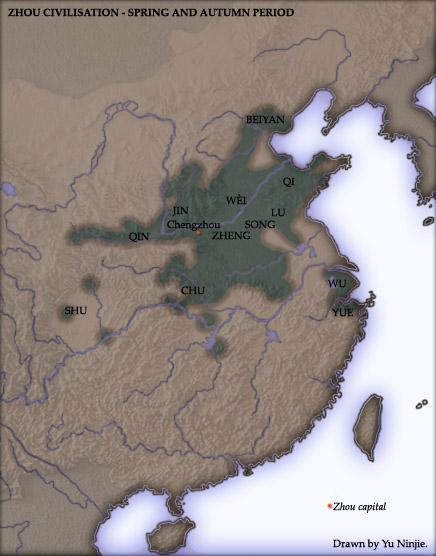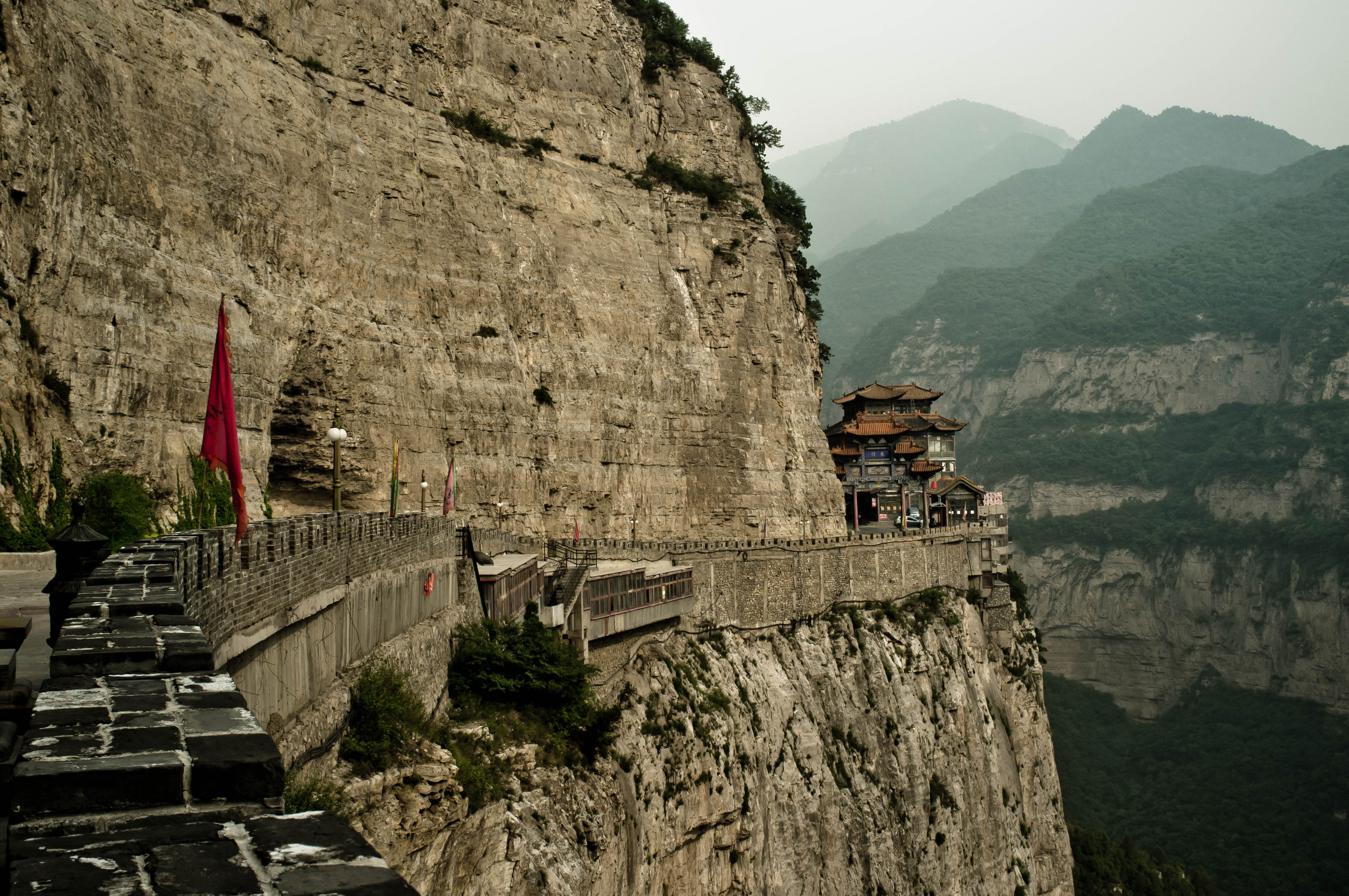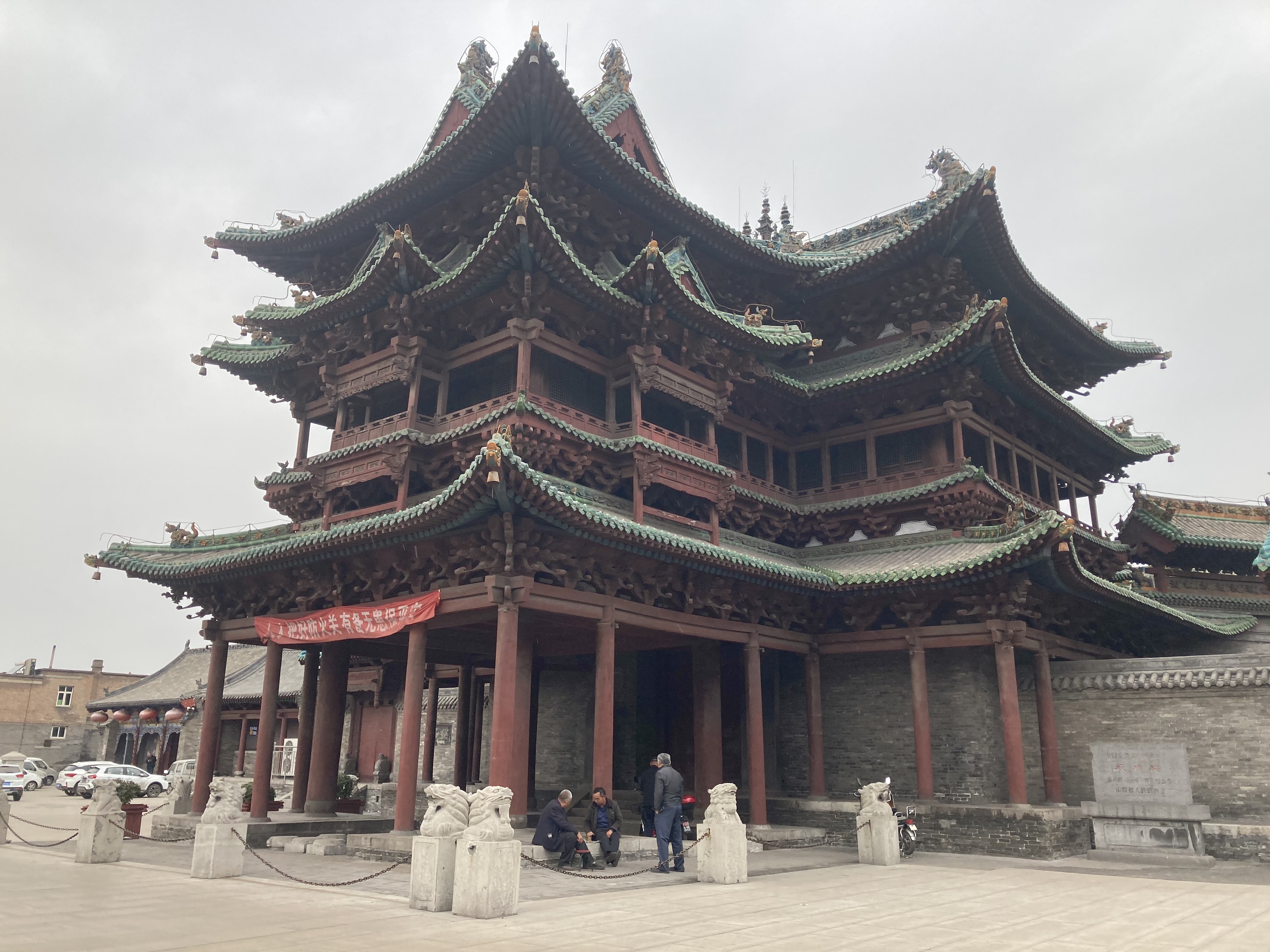|
Jiexiu
Jiexiu is a county-level city in the central part of Shanxi Province, China. It is under the administration of the prefecture-level city of Jinzhong and is located in the latter's western confines. Notable sites in and around Jiexiu include Mount Mian, Zhangbi Fortress, Houtu Temple and Xianshenlou. Names The territory around was known as Mianshang under the Zhou. By the Jin, the territory was known as Dingyang and the settlement at Jiexiu proper as Pingchang. Under the Northern Wei (4th–5th century), both became known as JiexiuCommandery. Under the Tang, this was renamed Jiezhou AD618–627. History Mianshang was supposedly set apart by Duke Chong'er to endow sacrifices for his retainer Jie Zhitui BC. The early histories state that Jie had loyally followed Chong'er in exile around China for 19 years but, when Chong'er was installed as duke of Jin by a Qin army, Jie had chosen to retire as a hermit rather than debase himself by asking for favors..... . In time, th ... [...More Info...] [...Related Items...] OR: [Wikipedia] [Google] [Baidu] |
Jie Zitui
Jie Zhitui (centuryBC), also known as Jie Zitui, was a Han aristocrat who served the Jin prince Chong'er during the Spring and Autumn Period of Chinese history. Chinese legend holds that when Chong'er finally ascended to power as the duke of Jin ("Duke Wen"), Jie either refused or was passed over for any reward, despite his great loyalty during the prince's times of hardship. Jie then retired to the forests of Jin in what is now central Shanxi with his mother. Supposedly, the duke so desired to repay Jie's years of loyalty that, when Jie declined to present himself at court, he ordered a forest fire to compel the recluse out of hiding. Instead, Jie and his mother were killed by the fire on . By the Han, Jie was being revered in central Shanxi as a Taoist immortal. He was annually commemorated with a ritual avoidance of fire that, despite many official bans, eventually became China's Cold Food and Qingming Festivals. Names Jie Zhitui or Jiezhi Tui is the name given to him in t ... [...More Info...] [...Related Items...] OR: [Wikipedia] [Google] [Baidu] |
Jie Zhitui
Jie Zhitui (centuryBC), also known as Jie Zitui, was a Han aristocrat who served the Jin prince Chong'er during the Spring and Autumn Period of Chinese history. Chinese legend holds that when Chong'er finally ascended to power as the duke of Jin ("Duke Wen"), Jie either refused or was passed over for any reward, despite his great loyalty during the prince's times of hardship. Jie then retired to the forests of Jin in what is now central Shanxi with his mother. Supposedly, the duke so desired to repay Jie's years of loyalty that, when Jie declined to present himself at court, he ordered a forest fire to compel the recluse out of hiding. Instead, Jie and his mother were killed by the fire on . By the Han, Jie was being revered in central Shanxi as a Taoist immortal. He was annually commemorated with a ritual avoidance of fire that, despite many official bans, eventually became China's Cold Food and Qingming Festivals. Names Jie Zhitui or Jiezhi Tui is the name given to him i ... [...More Info...] [...Related Items...] OR: [Wikipedia] [Google] [Baidu] |
Xianshenlou
Xianshenlou ( zh, t=祆神樓, s=祆神楼, l=Zoroaster Tower) is a pavilion-style building located in Jiexiu, Shanxi, China, first built in the Song dynasty as the stage that formed part of larger Zoroastrian temple complex. While the temple itself has since been demolished and replaced by a Taoist monastery, Xianshenlou is considered to be the sole surviving Zoroastrian building in China, and as such was listed as a Major Historical and Cultural Site Protected at the National Level in 1996. Gallery See also * ''Sogdian Daēnās ''Sogdian Daēnās'', also known as ''Sogdian Deities'' (french: Deux divinités féminines; zh, t=粟特神祇白畫) is a 10th-century line drawing discovered by the French Orientalist Paul Pelliot at the Mogao Caves. It was painted during t ...'' * Zoroastrianism in China References {{Reflist Major National Historical and Cultural Sites in Shanxi All articles with unsourced statements Articles using infobox templates with no data ... [...More Info...] [...Related Items...] OR: [Wikipedia] [Google] [Baidu] |
Jinzhong
Jinzhong, formerly Yuci, is a prefecture-level city in east central Shanxi province of the People's Republic of China, bordering Hebei province to the east. As of the 2020 census, its total population was 3,379,498 inhabitants whom 1,226,617 lived in the Yuci and Taigu urban districts. However,5,433,659 lived in the built-up (or metro) area of Taiyuan - Jinzhong made of Yuci district plus the 6 Taiyuan urban districts, largely conurbated. History Lingshi County was the location of the Nanshan Colliery disaster. In 1999, the area was considered sufficiently urbanized that Jinzhong Prefecture became a prefecture-level city, with its former seat at Yuci becoming its county-level Yuci District. Administrative divisions Jinzhong is divided into the following county-level subdivisions: Climate Jinzhong has a continental, monsoon-influenced semi-arid climate (Köppen ''BSk''),Peel, M. C., Finlayson, B. L., and McMahon, T. A.: Updated world map of the Köppen-Geiger climate cl ... [...More Info...] [...Related Items...] OR: [Wikipedia] [Google] [Baidu] |
Mount Mian
Mount Mian,. also known by its Chinese language, Chinese name Mianshan, is a list of Chinese mountains, mountain in the town (PRC), town of Mianshan (town), Mianshan in Jiexiu, Jinzhong, in central Shanxi Province in north China. Its official scenic area opened in the year 2000 and covers , with about 400 attractions grouped into 14 tourist areas. Name Mount Mian is supposedly named for the resemblance of its long, unbroken ridgeline to a piece of cotton. In Old Chinese, ancient Chinese, however, ''mián'' did not refer to cotton but to silk Embroidery thread, floss. It was then used by extension for the ideas of "weak", "soft", and "downy", before coming to be used in Standard Mandarin, modern Chinese as the usual word for cotton. Geography Mt Mian is a branch of the Taihang Mountains south of the Fen River. Its official scenic area covers , with about 400 attractions grouped into 14 tourist areas. The chain's ridgeline stretches for over , with its highest peak reaching . Th ... [...More Info...] [...Related Items...] OR: [Wikipedia] [Google] [Baidu] |
Mt Mian
Mount Mian,. also known by its Chinese name Mianshan, is a mountain in the town of Mianshan in Jiexiu, Jinzhong, in central Shanxi Province in north China. Its official scenic area opened in the year 2000 and covers , with about 400 attractions grouped into 14 tourist areas. Name Mount Mian is supposedly named for the resemblance of its long, unbroken ridgeline to a piece of cotton. In ancient Chinese, however, ''mián'' did not refer to cotton but to silk floss. It was then used by extension for the ideas of "weak", "soft", and "downy", before coming to be used in modern Chinese as the usual word for cotton. Geography Mt Mian is a branch of the Taihang Mountains south of the Fen River. Its official scenic area covers , with about 400 attractions grouped into 14 tourist areas. The chain's ridgeline stretches for over , with its highest peak reaching . The vegetation in the area has been a focus of study at Shanxi University. Geographical features of note include Buddha Embrac ... [...More Info...] [...Related Items...] OR: [Wikipedia] [Google] [Baidu] |
Shanxi
Shanxi (; ; formerly romanised as Shansi) is a landlocked province of the People's Republic of China and is part of the North China region. The capital and largest city of the province is Taiyuan, while its next most populated prefecture-level cities are Changzhi and Datong. Its one-character abbreviation is "" (), after the state of Jin that existed there during the Spring and Autumn period. The name ''Shanxi'' means "West of the Mountains", a reference to the province's location west of the Taihang Mountains. Shanxi borders Hebei to the east, Henan to the south, Shaanxi to the west and Inner Mongolia to the north. Shanxi's terrain is characterised by a plateau bounded partly by mountain ranges. Shanxi's culture is largely dominated by the ethnic Han majority, who make up over 99% of its population. Jin Chinese is considered by some linguists to be a distinct language from Mandarin and its geographical range covers most of Shanxi. Both Jin and Mandarin are spoken in Shanx ... [...More Info...] [...Related Items...] OR: [Wikipedia] [Google] [Baidu] |
Ji Chong'er
Duke Wen of Jin (697–628BC), born Chong'er (literally "Double Ears"), was a scion of the royal house of Jin during the Spring and Autumn Period of Chinese history. He famously endured a long period of exile from his realm before finally being restored to power (r.636–628BC) and rapidly leading Jin to hegemony over the other Chinese states of his time. He is a figure in numerous Chinese legends, including those about his loyal courtier Jie Zhitui, whose death is said to have inspired China's Cold Food and Qingming Festivals. Names "Duke Wen of Jin" is a posthumous name bestowed on him as part of his family's ancestral veneration. It literally means the "Cultured Duke of Jin". Duke Wen's given name was Chong'er. His clan name was Ji. Life Early life Prince Chong'er was born to Duke Xian of Jin in 697 BC. The '' Zuo Zhuan'' notes that "his ribs were all grown together," a sign of strength and leadership. Chong'er's half-brothers included Shensheng and Xiqi. While Shens ... [...More Info...] [...Related Items...] OR: [Wikipedia] [Google] [Baidu] |
County-level City
A county-level municipality (), county-level city or county city, formerly known as prefecture-controlled city (1949–1970: ; 1970–1983: ), is a Administrative divisions of China#County level (3rd), county-level administrative division of the China, People's Republic of China. County-level cities have judiciary, judicial but no legislature, legislative rights over their own local ordinance, local law and are usually governed by Administrative divisions of China#Prefectural level (2nd), prefecture-level divisions, but a few are governed directly by Administrative divisions of China#Provincial level (1st), province-level divisions. A county-level city is a "city" () and "county" () that have been merged into one unified jurisdiction. As such it is simultaneously a city, which is a municipal entity and a county which is an administrative division of a prefecture. Most county-level cities were created in the 1980s and 1990s by replacing denser populated Counties of Chin ... [...More Info...] [...Related Items...] OR: [Wikipedia] [Google] [Baidu] |
County-level City
A county-level municipality (), county-level city or county city, formerly known as prefecture-controlled city (1949–1970: ; 1970–1983: ), is a Administrative divisions of China#County level (3rd), county-level administrative division of the China, People's Republic of China. County-level cities have judiciary, judicial but no legislature, legislative rights over their own local ordinance, local law and are usually governed by Administrative divisions of China#Prefectural level (2nd), prefecture-level divisions, but a few are governed directly by Administrative divisions of China#Provincial level (1st), province-level divisions. A county-level city is a "city" () and "county" () that have been merged into one unified jurisdiction. As such it is simultaneously a city, which is a municipal entity and a county which is an administrative division of a prefecture. Most county-level cities were created in the 1980s and 1990s by replacing denser populated Counties of Chin ... [...More Info...] [...Related Items...] OR: [Wikipedia] [Google] [Baidu] |
Tang Dynasty
The Tang dynasty (, ; zh, t= ), or Tang Empire, was an Dynasties in Chinese history, imperial dynasty of China that ruled from 618 to 907 AD, with an Zhou dynasty (690–705), interregnum between 690 and 705. It was preceded by the Sui dynasty and followed by the Five Dynasties and Ten Kingdoms period. Historians generally regard the Tang as a high point in Chinese civilization, and a Golden age (metaphor), golden age of cosmopolitan culture. Tang territory, acquired through the military campaigns of its early rulers, rivaled that of the Han dynasty. The House of Li, Lǐ family () founded the dynasty, seizing power during the decline and collapse of the Sui Empire and inaugurating a period of progress and stability in the first half of the dynasty's rule. The dynasty was formally interrupted during 690–705 when Empress Wu Zetian seized the throne, proclaiming the Zhou dynasty (690–705), Wu Zhou dynasty and becoming the only legitimate Chinese empress regnant. The devast ... [...More Info...] [...Related Items...] OR: [Wikipedia] [Google] [Baidu] |
Zhou Kingdom
The Zhou dynasty ( ; Old Chinese ( B&S): *''tiw'') was a royal dynasty of China that followed the Shang dynasty. Having lasted 789 years, the Zhou dynasty was the longest dynastic regime in Chinese history. The military control of China by the royal house, surnamed Ji, lasted initially from 1046 until 771 BC for a period known as the Western Zhou, and the political sphere of influence it created continued well into the Eastern Zhou period for another 500 years. The establishment date of 1046 BC is supported by the Xia–Shang–Zhou Chronology Project and David Pankenier, but David Nivison and Edward L. Shaughnessy date the establishment to 1045 BC. During the Zhou dynasty, centralized power decreased throughout the Spring and Autumn period until the Warring States period in the last two centuries of the dynasty. In the latter period, the Zhou court had little control over its constituent states that were at war with each other until the Qin state consolidated power and for ... [...More Info...] [...Related Items...] OR: [Wikipedia] [Google] [Baidu] |






